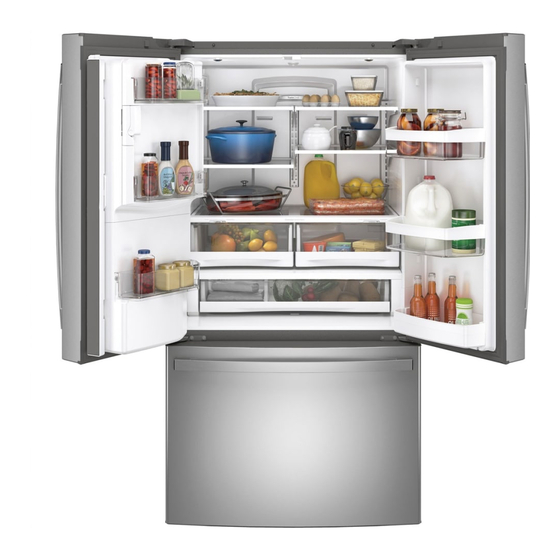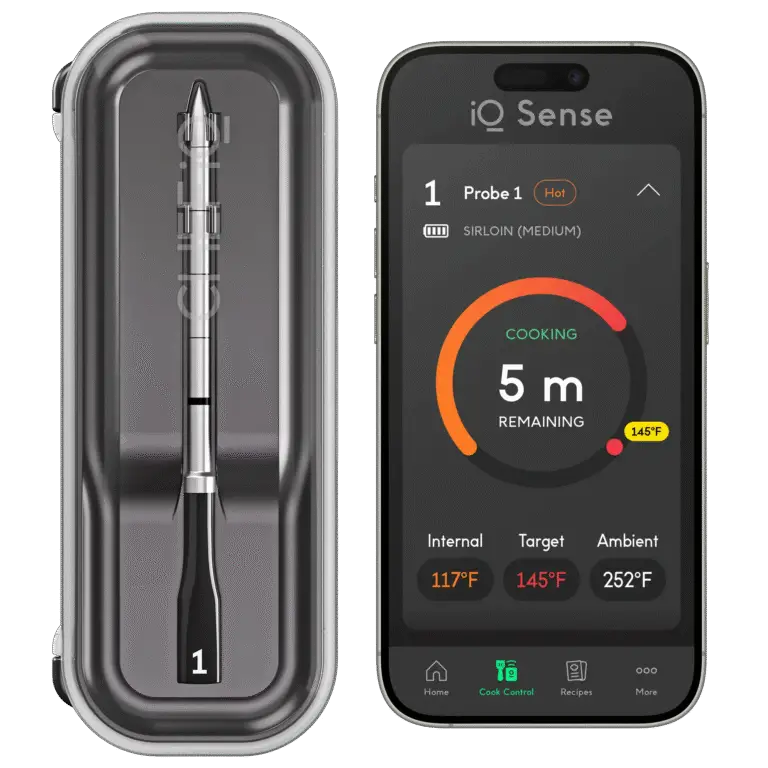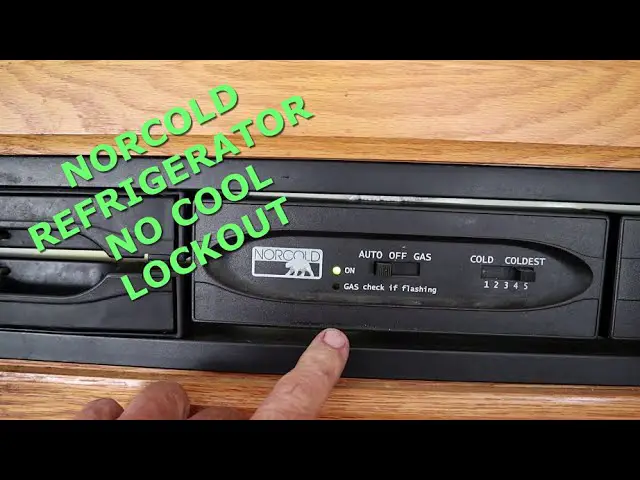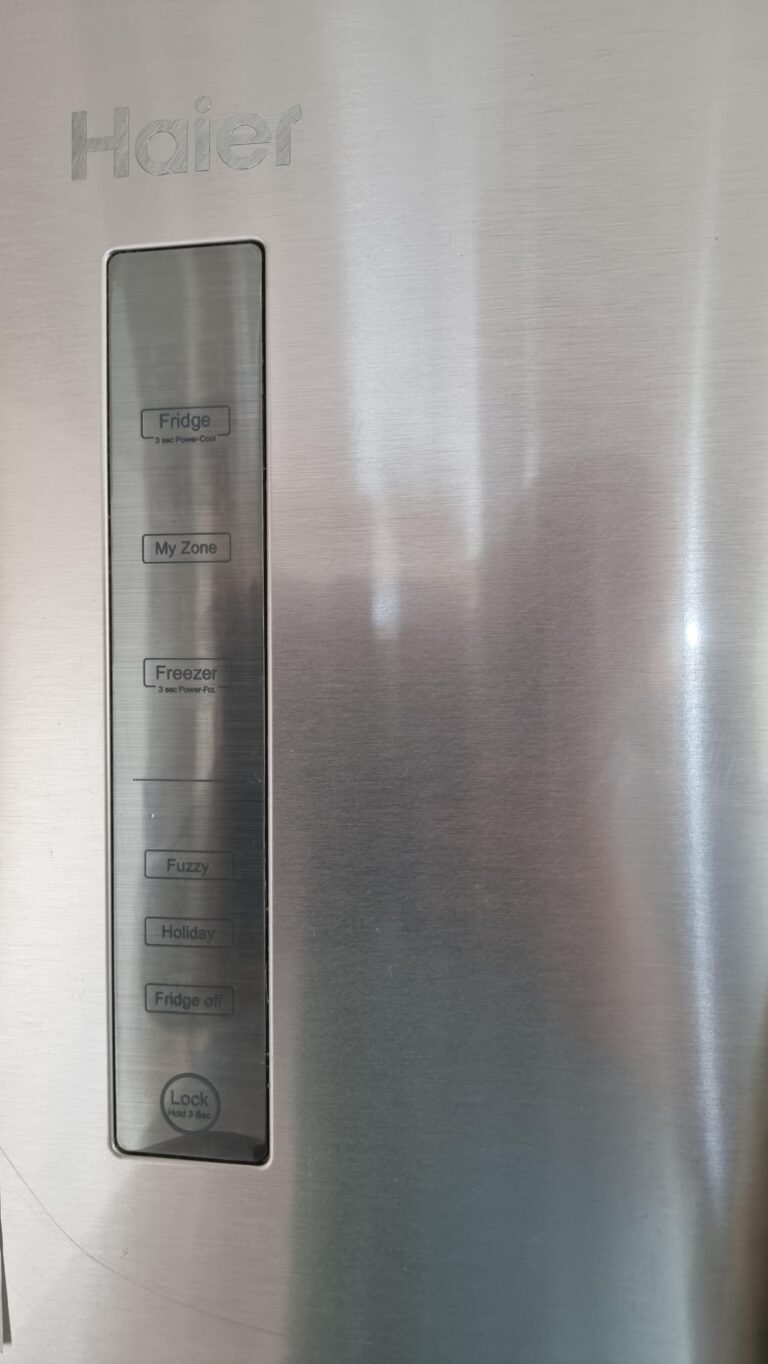GE Profile Fridge Troubleshooting: Quick Fixes You Need
Is your GE Profile fridge acting up and leaving you frustrated? Don’t worry—you’re not alone.
When your refrigerator suddenly stops cooling, makes strange noises, or displays error codes, it can feel overwhelming. But here’s the good news: most issues can be fixed without calling an expensive repair service. In this guide, we’ll walk you through simple, step-by-step troubleshooting tips to get your fridge back in perfect working condition.
Whether it’s a minor glitch or a common problem, you’ll learn exactly what to do. Stick around—your fridge (and your wallet) will thank you!
Common Cooling Issues
GE Profile fridges are known for their reliability. But cooling issues can arise over time. These problems can disrupt your fridge’s efficiency and food storage. Identifying the root cause can save time and prevent food waste. Below, we’ll address common cooling issues and how to troubleshoot them.
Fridge Not Cooling Properly
If your fridge feels warm, airflow might be blocked. Overstuffed shelves can restrict air circulation. Check vents inside the fridge for obstructions. Dirty condenser coils can also cause cooling problems. Clean them with a vacuum or soft brush. Inspect the thermostat settings and ensure they are not accidentally changed. A faulty door seal can let cold air escape. Test the seal by closing the door on a piece of paper. If it slips out easily, the seal might need replacement.
Freezer Temperature Problems
A freezer that’s too warm or too cold can cause food spoilage. First, verify the temperature setting. It should be around 0°F (-18°C). Check for frost or ice buildup near the vents. This can block cold air flow. Ensure the freezer door is closing tightly. A misaligned door can let warm air inside. Inspect the evaporator fan. If it’s not running, it may need repair or replacement. Regular maintenance can prevent these issues.
Frost Build-up In Freezer
Excess frost in the freezer can reduce its cooling efficiency. This often happens if the door is left open for too long. Warm air enters and creates moisture, leading to frost. Check the door gasket for damage or wear. Replace it if it’s not sealing properly. A malfunctioning defrost heater can also cause frost buildup. If frost keeps returning, the defrost system may need inspection. Cleaning the vents and ensuring proper airflow can help prevent frost.

Credit: www.youtube.com
Water And Ice Dispenser Problems
The water and ice dispenser on your GE Profile fridge is a convenient feature, but when it doesn’t work as expected, it can be frustrating. Whether it’s refusing to dispense, leaking water, or failing to produce ice, these issues can disrupt your routine. Let’s dive into common problems and simple fixes to get your dispenser working again.
Dispenser Not Working
Is your dispenser completely unresponsive? Start by checking if the fridge is receiving power. A loose plug or tripped circuit breaker could be the culprit.
Next, inspect the control lock feature. Many GE fridges have a lock button that disables the dispenser. If the lock icon is lit, press and hold the button for three seconds to unlock.
If the issue persists, take a look at the water filter. A clogged or old filter can block water flow. Replace it with a new one if it hasn’t been changed recently. Always use GE-compatible filters for the best fit and function.
Leaking Water From Dispenser
Leaking water can create a mess and waste resources. First, check if the drip tray beneath the dispenser is full. Empty it and see if the issue resolves.
If water still leaks, the water line might be loose or damaged. Open the fridge door and inspect the connections behind the dispenser. Tighten any loose fittings or replace damaged tubing.
Sometimes, air trapped in the water line can cause leaks. Run the dispenser for a few minutes to clear air bubbles. If the leak continues, it could indicate a faulty valve that may need professional attention.
Ice Maker Not Producing Ice
Is your ice maker on strike? First, ensure the ice maker is turned on. Check the switch or control panel settings—sometimes it’s as simple as flipping a switch.
Low water pressure can prevent ice production. Check your home’s water supply and make sure the valve connecting to the fridge is fully open.
If the ice maker is still not working, inspect the ice bin for clogs. Occasionally, ice can jam and block the mechanism. Remove the bin, clear any obstructions, and reattach it securely.
When troubleshooting your GE Profile fridge, patience pays off. Which dispenser issue are you facing? Share your story below—we’d love to hear how you fixed it!
Unusual Noises
Hearing unusual noises from your GE Profile fridge can be unsettling. These sounds often signal common issues that are easy to address. Understanding the type of noise can help pinpoint the problem. Let’s explore the most common sounds and what they mean.
Buzzing Or Humming Sounds
A consistent buzzing or humming noise is usually linked to the compressor. The compressor helps cool your fridge and often runs quietly. If the sound is louder than usual, check the fridge’s position. An uneven surface can increase vibrations, amplifying the noise. Another reason could be the water dispenser. If your fridge has one, it might buzz during water refill cycles.
Clicking Or Tapping Noises
Clicking or tapping sounds often come from the defrost timer or control board. These are normal during the defrost cycle as the fridge regulates temperature. If the clicking is frequent, inspect the power source and connections. Loose wiring can cause repeated clicks. Also, check if the fridge door is sealing properly to prevent overworking the motor.
Loud Compressor Noise
A loud compressor can indicate age or wear on the fridge. Compressors naturally make noise, but excessive sound may suggest a problem. Start by cleaning the condenser coils located at the back or bottom. Dust buildup forces the compressor to work harder, creating noise. If cleaning doesn’t help, consider professional maintenance to check for internal issues.

Credit: www.youtube.com
Door Seal And Alignment
The door seal and alignment of your GE Profile fridge play a vital role in maintaining efficiency. A well-sealed door ensures proper cooling and reduces energy waste. Misalignments or damaged seals can cause cooling issues and increase electricity usage. Addressing these problems promptly helps your fridge work effectively.
Door Not Closing Fully
A fridge door that doesn’t close properly can lead to cooling problems. Start by checking for obstructions, like food containers or shelves. Remove anything blocking the door’s path. Dirt or debris on the door seal may also prevent a proper close. Clean the seal with a damp cloth to remove buildup. If the issue persists, inspect the seal for damage or wear.
Damaged Or Worn-out Door Seal
A damaged door seal can let cold air escape, reducing cooling efficiency. Inspect the seal for cracks, tears, or gaps. A simple test involves placing a dollar bill between the door and the seal. Close the door and try to pull the bill out. If it slides out easily, the seal may need replacement. Replacing the door seal is a cost-effective way to restore your fridge’s efficiency.
Misaligned Doors
Misaligned doors can cause uneven sealing, leading to cooling loss. Check the alignment by visually inspecting the gaps around the door. Use a wrench or screwdriver to adjust the hinges if needed. Some GE Profile fridges also have adjustable leveling legs. Make sure the fridge is level to prevent misalignment. Proper alignment ensures the door closes tightly and seals correctly.
Electrical And Display Issues
The electrical and display features of a GE Profile fridge are crucial. These components ensure the fridge functions properly and remains user-friendly. Faults in the display or electrical system can disrupt its usability and performance. Identifying and addressing these issues promptly can help maintain the appliance’s efficiency.
Display Panel Not Responding
A non-responsive display panel often indicates a connection issue or software glitch. Start by checking if the fridge is properly plugged into the outlet. Reset the fridge by unplugging it for 5 minutes and plugging it back in. If the panel remains unresponsive, inspect the control board for visible damage. Loose wires or burned components may require professional repair.
Lights Not Working
If the interior lights fail to turn on, check the lightbulbs first. Replace any damaged or burned-out bulbs. Inspect the light switch near the door hinge for dirt or debris. Clean the switch carefully to restore its function. If the lights still don’t work, test the power supply to ensure consistent electricity. Faulty wiring might need expert attention.
Power Cycling Or Shutting Off
A fridge that cycles power or shuts off unexpectedly may have electrical faults. Confirm that the outlet provides steady voltage using a voltage tester. Ensure the power cord is intact and not damaged. Overheating can trigger the fridge to turn off; clean the condenser coils to improve airflow. Persistent issues might suggest a failing compressor or control board.
Temperature Control Problems
The temperature inside your GE Profile fridge should stay consistent. Fluctuating temperatures can spoil food and beverages. This issue often arises from problems with temperature control. Understanding potential causes can help you fix the problem faster.
Thermostat Settings Not Working
The thermostat regulates the fridge’s internal temperature. If it isn’t working, your fridge might not cool properly. Check the thermostat settings first. Ensure it’s set to the recommended range, usually between 37°F and 40°F. A faulty thermostat may need replacement.
Inconsistent Internal Temperatures
Uneven cooling inside the fridge can cause some items to spoil. Blocked air vents are a common reason. Ensure vents aren’t covered by food containers. Faulty door seals can also cause warm air to enter. Check for gaps or cracks in the seals.
Control Panel Error Codes
Modern GE Profile fridges often display error codes on the control panel. These codes can indicate temperature-related issues. Refer to the user manual to understand specific error codes. Resetting the control panel may solve minor glitches. If the error persists, professional assistance might be required.
Leaks And Drainage Issues
Leaks in your GE Profile fridge can be frustrating and messy. These issues often stem from drainage problems, clogs, or improper functioning. Addressing them quickly can prevent further complications and maintain your fridge’s performance.
Water Leaking From Base
Water pooling at the base of your fridge is a common issue. This can happen if the defrost drain is blocked or damaged. Dirt, debris, or food particles may clog the drain, causing water to overflow. Check the drain tube for obstructions and clear them using warm water and a small brush.
Inspect the drip pan located beneath the fridge. If it’s cracked or misaligned, water may leak onto the floor. Replace the pan if damaged or reposition it correctly to ensure proper drainage.
Clogged Or Frozen Drain Line
A clogged or frozen drain line can disrupt water flow inside the fridge. Ice buildup in the drain line often occurs due to temperature fluctuations. Use warm water to thaw the ice and clear the blockage. Avoid using sharp tools to prevent damage.
If the drain line continues to freeze, check the fridge’s temperature settings. Ensure the temperature isn’t too low to prevent recurring ice formation. Regular cleaning of the drain line can also help avoid future clogs.
Puddle Formation Inside Fridge
Puddles inside the fridge often indicate drainage issues. Water may accumulate due to improper flow to the drain pan. Check the drain hole inside the fridge compartment for clogs. Clean it with a pipe cleaner or thin wire to restore normal drainage.
Excess condensation may lead to puddles if the fridge door doesn’t seal tightly. Inspect the door gasket for wear or cracks. Replace damaged gaskets to maintain an airtight seal and reduce moisture buildup.

Credit: www.manualslib.com
General Maintenance Tips
Keeping your GE Profile fridge in top shape doesn’t have to be a headache. A little effort with regular maintenance can go a long way in preventing costly repairs and improving its efficiency. If you’ve ever wondered how to keep your fridge running smoothly, these tips can help you take control.
Cleaning The Coils
The coils at the back or bottom of your GE Profile fridge play a crucial role in cooling. Dust and dirt buildup can reduce efficiency and make your fridge work harder. This not only increases your energy bills but also shortens the lifespan of the appliance.
Use a coil brush or a vacuum with a brush attachment to gently clean the coils. Make sure you unplug the fridge first for safety. Do this every six months to keep your fridge running like new. Have you checked your coils lately?
Replacing Filters
Filters help keep the air and water inside your fridge clean. Over time, they can clog and lose their effectiveness. A dirty filter can affect the taste of your water and ice or even lead to unpleasant odors inside the fridge.
Check your fridge’s manual to locate the filters and follow the replacement instructions. Most filters need to be replaced every six months, but if your household uses water frequently, you might need to replace them sooner. Set a reminder on your phone to keep track.
Regular Defrosting
Frost buildup can take up valuable space in your freezer and make it harder for your fridge to maintain the right temperature. Too much frost can even impact cooling performance, leaving you with spoiled food.
Defrosting is simple. Empty your freezer, unplug the fridge, and leave the freezer door open. Use towels to soak up any melted frost and clean the interior before plugging it back in. If your fridge has an auto-defrost feature, just check that it’s working properly.
Don’t wait until frost becomes a major issue. A little attention now can save you from bigger problems later.
Conclusion
Troubleshooting your GE Profile fridge can save time and prevent stress. Start with simple checks like power, temperature, and door seals. Clean the coils and ensure vents are clear for proper airflow. For advanced issues, consult the manual or contact a professional.
Regular maintenance keeps your fridge running efficiently. Addressing problems early avoids bigger repairs later. A well-functioning fridge protects your food and ensures convenience. Use these tips to keep your appliance in top shape. Reliable performance begins with proper care and attention.
Stay proactive for a smooth kitchen experience.






